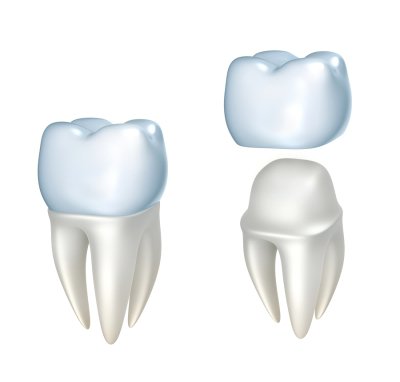Getting the Facts About Dental Crowns

Teeth consist of two parts: a root and a crown. In a healthy mouth, the root is concealed by gum tissue. The crown is the part of the tooth which is clearly visible above the gum line (in the lower arc of teeth) or below the gum line (in the upper teeth). A dental crown is a restoration which covers some or all of the visible portion of the tooth. Ask a qualified dental practitioner at a dental office in Renton near Seattle whether a crown would be an appropriate treatment for you.
What Conditions Can Crowns Treat?
Your dentist may decide to suggest attaching a dental crown in one of a number of circumstances. If your tooth is cracked or badly damaged, a crown may help to prevent the tooth from splitting apart. Crowns can help to repair the damage caused by bruxism (clenching or grinding) or the erosion of tooth enamel, due to infection or disease. Crowns can also be used to support dental implants and bridges. You will need a crown if you have undergone root canal treatment. You may also choose to have a crown fitted for cosmetic reasons, to correct the size, shape, or color of a tooth or teeth.
What Are Crowns Made Of?
Dental crowns may be made from a variety of different materials, some of which include gold and other metal alloys, porcelain laminate, composite resin, stainless steel, and zirconium.
How Are Crowns Attached?
First, your dentist will administer a local anesthetic, to numb the affected area. He or she may need to remove some of the enamel of the original tooth, to create a stable surface to which the crown can adhere. The dentist will take an impression of your original tooth and your crown will be carefully tailor-made to complement the color, size, and shape of your smile. You may be fitted with a temporary crown while the permanent restoration is being constructed. Finally, the dentist will attach the permanent crown to your tooth, using special cement. After a brief period of adjustment, you should find that the crown feels, looks, and functions just like a natural tooth.
